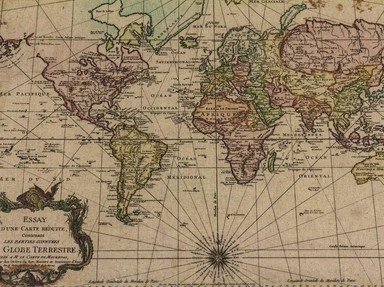Quiz Answer Key and Fun Facts
1. Kourion was founded by Argos sometime in 13th century BC. It was an early centre of Christianity before the earthquake in 365 AD destroyed the city. The House of Eustolios and the Sanctuary of Apollo can be seen among the ruins that remain. Where is Kourion located?
2. With the approval of the Oracle at Delphi, Ancient Greeks expanded at Cyrene in 630 BC and Cyrene rapidly grew to become prominent in the region. However, it suffered a steep decline after the destructive earthquake in 365 AD. Which country is Cyrene situated in?
3. Built by the Milesians during 7th century BC, Naucratis was an important powerhouse for commerce, as revealed by the abundance in archaeological finds. Temples dedicated to Greek gods, like Aphrodite and Apollo, could be found there. Which modern-day country housed this Greek colony?
4. This city was an important trading hub in 20th century BC. However, it was destroyed by Pithana, a Hittite king, during the 17th century BC. Anitta texts and Kültepe texts were excavated in this city. Located in the Kayseri Province of Turkey, which city is described above?
5. In 1834 AD, French archaeologist Charles Texier found the ruins of this ancient city, which happened to be the capital city of Hittite Empire. The Lion Gate can be seen there today in Turkey. What was this capital city of the Hittite Empire?
6. A small settlement in Vix was renowned for an incredibly rich Celtic grave, known as the Vix Grave. It dated back to around 6th century BC. Vix Krater, a large, bronze wine-mixing vessel, was excavated and was one of best-preserved early Greek metalworks ever found. In which country was Vix located?
7. Excavations of Heuneburg revealed that it had been inhabited since the Middle Bronze Age, and grew to become an important Celtic centre for trade and commerce. However, it was abandoned roughly around 4th century BC and the reasons remain unknown. Which country is Heuneburg located in?
8. Built in 1220 AD as the capital and trading settlement of the Mongol Empire, this city was completed in 1235 AD during the rule of Ogedei Xaan. When Ming forces toppled the Yuan Dynasty, they laid siege to this city, which was destroyed in 1380 AD. Which capital city was this?
9. An ancient capital of the Achaemenid Empire, this city was constructed around 518 BC by orders of Darius the Great. It was destroyed in 330 BC by Alexander the Great. Name the city.
10. Struck by an earthquake in 373 BC and ravaged by seismic sea waves, the ancient city of Helike began to sink. Many early writers attributed this sinking to the wrath of Poseidon. Which country was Helike located in?
Source: Author
knightmyst
This quiz was reviewed by FunTrivia editor
Pagiedamon before going online.
Any errors found in FunTrivia content are routinely corrected through our feedback system.
